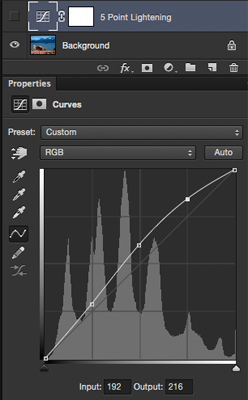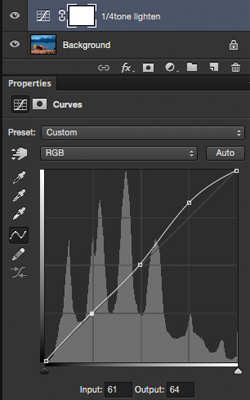Ahmose I was one of the most important Pharaohs in the history of Pharaonic Egypt so the article is little bit long, sorry for that.
The Name Ahmose I:
sometimes written Amosis I, "Amenes" and "Aahmes" and meaning Born of Iah.
The meaning of the name: The name Ahmose is a combination of the theophoric syllable 'Ah' and the combining form '-moses'. The theophoric syllable 'Ah' refers to the deity Iah.
Note: Iah is a god of the moon in ancient Egyptian religion. His name simply means moon.
His family:Ahmose I, was a pharaoh of ancient Egypt and the founder of the Eighteenth dynasty. He was a member of the Theban royal house, the son of pharaoh Seqenenre Tao and brother of the last pharaoh of the Seventeenth dynasty, King Kamose.
His life:
During the reign of his father or grandfather, Thebes rebelled against the Hyksos, the rulers of Lower Egypt. When he was seven his father was killed, and he was about ten when his brother died of unknown causes, after reigning only three years. Ahmose I assumed the throne after the death of his brother, and upon coronation became known as Neb-Pehty-Re (The Lord of Strength is Re).
During his reign, he completed the conquest and expulsion of the Hyksos from the delta region, restored Theban rule over the whole of Egypt and successfully reasserted Egyptian power in its formerly subject territories of Nubia and Canaan. He then reorganized the administration of the country, reopened quarries, mines and trade routes and began massive construction projects of a type that had not been undertaken since the time of the Middle Kingdom. This building program culminated in the construction of the last pyramid built by native Egyptian rulers.
Ahmose I 's Mummy
Ahmose I's mummy was discovered in 1881 within the Deir el-Bahri Cache, located in the hills directly above the Mortuary Temple of Hatshepsut.
He was interred along with the mummies of other 18th and 19th dynasty leaders Amenhotep I, Thutmose I, Thutmose II, Thutmose III, Ramesses I, Seti I, Ramesses II and Ramesses IX, as well as the 21st dynasty pharaohs Pinedjem I, Pinedjem II and Siamun.
Thanks
The Name Ahmose I:
sometimes written Amosis I, "Amenes" and "Aahmes" and meaning Born of Iah.
The meaning of the name: The name Ahmose is a combination of the theophoric syllable 'Ah' and the combining form '-moses'. The theophoric syllable 'Ah' refers to the deity Iah.
Note: Iah is a god of the moon in ancient Egyptian religion. His name simply means moon.
His family:Ahmose I, was a pharaoh of ancient Egypt and the founder of the Eighteenth dynasty. He was a member of the Theban royal house, the son of pharaoh Seqenenre Tao and brother of the last pharaoh of the Seventeenth dynasty, King Kamose.
 |
| AhmoseI-Statue Head Metropolitan Museum |
His life:
During the reign of his father or grandfather, Thebes rebelled against the Hyksos, the rulers of Lower Egypt. When he was seven his father was killed, and he was about ten when his brother died of unknown causes, after reigning only three years. Ahmose I assumed the throne after the death of his brother, and upon coronation became known as Neb-Pehty-Re (The Lord of Strength is Re).
During his reign, he completed the conquest and expulsion of the Hyksos from the delta region, restored Theban rule over the whole of Egypt and successfully reasserted Egyptian power in its formerly subject territories of Nubia and Canaan. He then reorganized the administration of the country, reopened quarries, mines and trade routes and began massive construction projects of a type that had not been undertaken since the time of the Middle Kingdom. This building program culminated in the construction of the last pyramid built by native Egyptian rulers.
Ahmose's reign laid the foundations for the New Kingdom, under which Egyptian power reached its peak. His reign is usually dated to the mid-16th century BC.
Dates and length of reign
Ahmose's reign can be fairly accurately dated using the Heliacal rise of Sirius in his successor's reign, but because of disputes over from where the observation was made, he has been assigned a reign from 1570–1546, 1560–1537 and 1551–1527 by various sources. Manetho gives Ahmose a reign of 25 years and 4 months; this figure is supported by a 'Year 22' inscription from his reign at the stone quarries of Tura. A medical examination of his mummy indicates that he died when he was about thirty-five, supporting a 25-year reign if he came to the throne at the age of 10. The radiocarbon date range for the start of his reign is 1570–1544 BC, the mean point of which is 1557 BC.
Art and monumental constructions
Dates and length of reign
Ahmose's reign can be fairly accurately dated using the Heliacal rise of Sirius in his successor's reign, but because of disputes over from where the observation was made, he has been assigned a reign from 1570–1546, 1560–1537 and 1551–1527 by various sources. Manetho gives Ahmose a reign of 25 years and 4 months; this figure is supported by a 'Year 22' inscription from his reign at the stone quarries of Tura. A medical examination of his mummy indicates that he died when he was about thirty-five, supporting a 25-year reign if he came to the throne at the age of 10. The radiocarbon date range for the start of his reign is 1570–1544 BC, the mean point of which is 1557 BC.
Art and monumental constructions
- With the re-unification of Upper and Lower Egypt under Ahmose, a renewal of royal support for the arts and monumental construction occurred. Ahmose reportedly devoted a tenth of all the productive output towards the service of the traditional gods, reviving massive monumental constructions as well as the arts. However, as the defeat of the Hyksos occurred relatively late in Ahmose's reign, his subsequent building program likely lasted no more than seven years, and much of what was started was probably finished by his son and successor Amenhotep I.
- Work from Ahmose's reign is made of much finer material than anything from the Second Intermediate Period, though the craftsmanship from his reign does not always match the best work from either the Old or Middle Kingdoms.
- The art of glass making is thought to have developed during Ahmose's reign.One of the earliest glass beads found contains the names of both Ahmose and Amenhotep I, written in a style dated to about the time of their reigns.
- Ahmose resumed large construction projects like those before the second intermediate period.[The Second Intermediate Period marks a period when Ancient Egypt fell into disarray for a second time, between the end of the Middle Kingdom and the start of the New Kingdom. It is best known as the period when the Hyksos made their appearance in Egypt and whose reign comprised the Fifteenth dynasties.]
- Excavations at the site of Avaris by Manfred Bietak have shown that Ahmose had a palace constructed on the site of the former Hyksos capital city's fortifications. Bietak found fragmentary Minoan-style remains of the frescoes that once covered the walls of the palace; there has subsequently been much speculation as to what role this Aegean civilization may have played in terms of trade and in the arts.
- Perhaps the most important shift was a religious one: Thebes effectively became the religious as well as the political center of the country, its local god Amun credited with inspiring Ahmose in his victories over the Hyksos. The importance of the temple complex at Karnak (on the east bank of the Nile north of Thebes) grew and the importance of the previous cult of Ra based in Heliopolis diminished.
- Several stelae detailing the work done by Ahmose were found at Karnak, two of which depict him as a benefactor to the temple. In one of these stelae, known as the "Tempest Stele", he claims to have rebuilt the pyramids of his predecessors at Thebes that had been destroyed by a major storm The Thera eruption in the Aegean has been implicated by some scholars as the source of this damage, but similar claims are common in the propagandistic writings of other pharaohs, showing them overcoming the powers of darkness.
The Pyramid of Ahmose I was built not as a tomb, but a cenotaph for pharaoh Ahmose I at the necropolis of Abydos, Egypt. It was the only royal pyramid built in this area. Today only a pile of rubble remains, reaching a height of about 10 m.
The pyramid was constructed from sand and rubble and only the usual limestone casing kept the building in shape. It had a base length of 52 m and was about 40 m high. The inclination of the sides was 60°.
It did not feature any chambers for burial. Around the pyramid were a number of temples and also a small cenotaph pyramid for his grandmother Tetisheri.
This pyramid was the last pyramid ever built as part of a mortuary complex in Egypt.
This pyramid was the last pyramid ever built as part of a mortuary complex in Egypt.
Ahmose I 's Mummy
Ahmose I's mummy was discovered in 1881 within the Deir el-Bahri Cache, located in the hills directly above the Mortuary Temple of Hatshepsut.
He was interred along with the mummies of other 18th and 19th dynasty leaders Amenhotep I, Thutmose I, Thutmose II, Thutmose III, Ramesses I, Seti I, Ramesses II and Ramesses IX, as well as the 21st dynasty pharaohs Pinedjem I, Pinedjem II and Siamun.
Ahmose I's mummy was found within a coffin that bore his name in hieroglyphs, and on his bandages his name was again written in hieratic script.
While the cedarwood coffin's style dates it squarely to the time of the 18th dynasty, it was neither of royal style nor craftsmanship, and any gilding or inlays may have been stripped in antiquity.
He had evidently been moved from his original burial place, re-wrapped and placed within the cache at Deir el-Bahri during the reign of the 21st dynasty priest-king Pinedjum II, whose name also appeared on the mummy's wrappings.
Around his neck a garland of delphinium flowers had been placed. The body bore signs of having been plundered by ancient grave-robbers, his head having been broken off from his body and his nose smashed.
The body was 1.63 m in height. The mummy had a small face with no defining features, though he had slightly prominent front teeth; this may have been an inherited family trait, as this feature can be seen in some female mummies of the same family, as well as the mummy of his descendant, Thutmose II.
While the cedarwood coffin's style dates it squarely to the time of the 18th dynasty, it was neither of royal style nor craftsmanship, and any gilding or inlays may have been stripped in antiquity.
He had evidently been moved from his original burial place, re-wrapped and placed within the cache at Deir el-Bahri during the reign of the 21st dynasty priest-king Pinedjum II, whose name also appeared on the mummy's wrappings.
Around his neck a garland of delphinium flowers had been placed. The body bore signs of having been plundered by ancient grave-robbers, his head having been broken off from his body and his nose smashed.
The body was 1.63 m in height. The mummy had a small face with no defining features, though he had slightly prominent front teeth; this may have been an inherited family trait, as this feature can be seen in some female mummies of the same family, as well as the mummy of his descendant, Thutmose II.
Thanks
Manal Raafat































